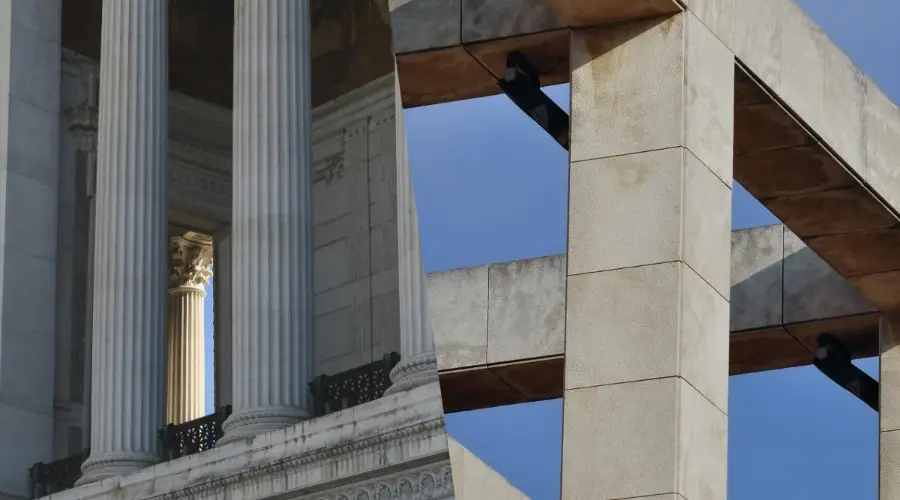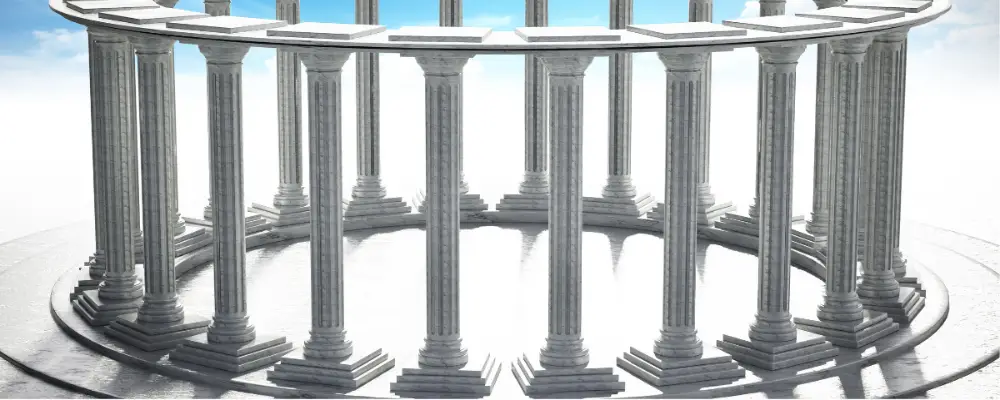A construction project involves several challenging processes. Being aware of every stage of the work ensures desired strength and longevity of the structures. Among all, the column is the most noticeable feature, often used to support and transmit the gravity loads from the roofs or floors of buildings to the foundation.
The design of the column is quite typical. It considers various significant parameters such as location, shape, and size. The commonly used column shapes are circular, rectangular, and square. In this article, you will get to understand about circular columns and why they play a vital role in construction. Let’s delve into the topic now.
What are Circular Columns?
Circular columns are cylindrical structural members generally made of concrete and are typically reinforced with steel bars to make them even stronger. It is primarily used to carry vertical loads caused in the buildings and other structures. Being a strong and durable column choice, they can withstand a lot of weight, and the sizes can be accommodated according to the project needs.
A circular column is an ideal choice for seismically active areas, providing resistance against earthquakes, harsh winds, and other types of environmental impacts.
Importance of Circular Columns in Construction
Circular columns serve several advantages to the construction. They are often designed to withstand ultimate axial load, moment and shear forces. Additionally, here are some more benefits:
Uniform Load Distribution: Circular columns are primarily recognised for the uniform load distribution across their cross-sectional area, providing optimal load-bearing capacity to structures. This leads to reduced stress concentration and risk of deformation and cracks.
Strong and Ductile: As mentioned earlier, a circular column is generally made of concrete, which helps improve the strength and durability of the structure. It is specifically suitable for seismic areas where they are subjected to encountering torsional moments and lateral forces.
Aesthetic Appeal: More than its technical aspects, circular columns are often used for their sleek and modern appearance. They offer a neat and contemporary look to a wide range of architectural styles. It makes the structures unique and visually appealing.
Buckling Resistance: Circular columns are a better alternative for slender columns, which have failed under compressive loads. They are mostly used in tall structures that are subjected to significant axial loads.
Design and Calculation of Circular Columns

- To design and calculate the size and number of circular columns for your construction, here are the steps to follow:
- Before stepping into the calculation, you need to determine the axial load, moment, and shear force that the column must support.
- Select the compressive strength of the concrete and yield strength of the reinforcement steel according to your construction needs.
- Calculate the diameter using the axial load and moment of the column.
- Estimate the required area of steel by selecting the appropriate bar diameters and spacing to resist the tensile forces.
Calculations:
Formwork:
A = π x d x h
Where d is the diameter and h is the height
Concrete quantity:
To determine the concrete quantity to design the circular column, use this formula:
V = π/4 x d2 x h.
Construction Process of Circular Column
A circular column is valued for its exceptional structural integrity and aesthetic feel. Herewith, you could know the construction process involved in it:
Formwork Preparation: The structures are incorporated with specialized circular formwork, which is often made of plywood or steel. Firstly, the formwork is assembled on-site according to the required shape and height. It is then tied to avoid movement during concrete pouring.
Reinforcement Placement: Placing the reinforcement bars in the specified spacing and diameter based on design calculations is crucial. Fortunately, the bars can be bent to achieve the desired shape within the formwork. Then the reinforcement is tied with wires to ensure safety.
Concrete Pouring: Mix the concrete in an appropriate consistency and pour it into the formwork either using pumps or buckets. The concrete is vibrated to eliminate the air voids and leveled to achieve the desired height.
Curing: The concrete needs to be cured in a controlled environment to meet the estimated strength. Rapid drying may cause cracking and other severe damages; ensure that the concrete is kept moist for at least 28 days.
Formwork Removal: Once the concrete is cured well, it can achieve its desired strength and durability. After inspection, the formwork in the field is safely removed.
Applications of Circular Columns in Modern Construction
Circular columns have become a popular choice in various modern structures. Here are some of its key applications to know:
High-Rise Buildings & Bridges: Circular columns are an ideal choice for high-rise structures and bridges due to their exceptional load-bearing capacity and resistance to buckling and deformation. They can bear the load from roofs or floors and safely transmit it to the foundation.
Industrial Settings: They can also be an integral part of industrial settings because they can withstand heavy loads and harsh environmental conditions. Additionally, they are widely used in tall structures and seismic areas that are frequently subjected to harsh weather.
Why Rectangular Column Shape is Preferred Over Circular Column?

| Parameters | Rectangular Column | Circular Column |
| Formwork | A rectangular column is easier to construct and dismantle with no complexities and challenges. | Circular columns require better formwork materials and workmanship, which takes more time to build. |
| Reinforcement | Placing reinforcement is easier than for a circular column, and it is ideal to use in displaying signage, images, and notice boards. | Requires a complex reinforcement arrangement, particularly when handling large diameters. |
| Cost | Due to its simpler and trouble-free construction method, a rectangular column is cost-effective and requires lower material usage. | It is expensive because it requires specialised labour and equipment for proper setting. |
| Material Efficiency | Rectangular columns can be optimized for specific load conditions even for varying dimensions. | It offers less flexibility in adjusting material usage in a cross-sectional area. |
Concluding Lines
In the intricate world of construction, choosing the right column type is essential to ensure the structural integrity and visual appearance. The circular column is the most commonly used, suitable for a range of architectural styles, and can fit any type of construction. By understanding its significance and applications, you can get to know the benefits of usage.

